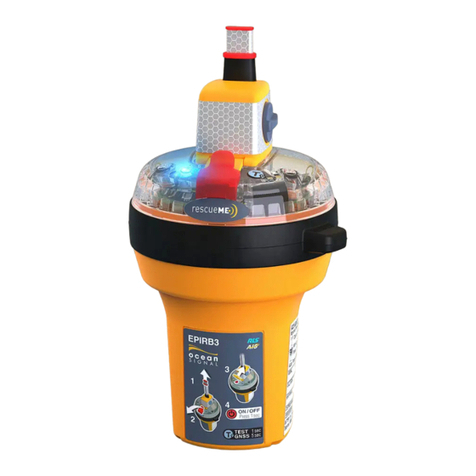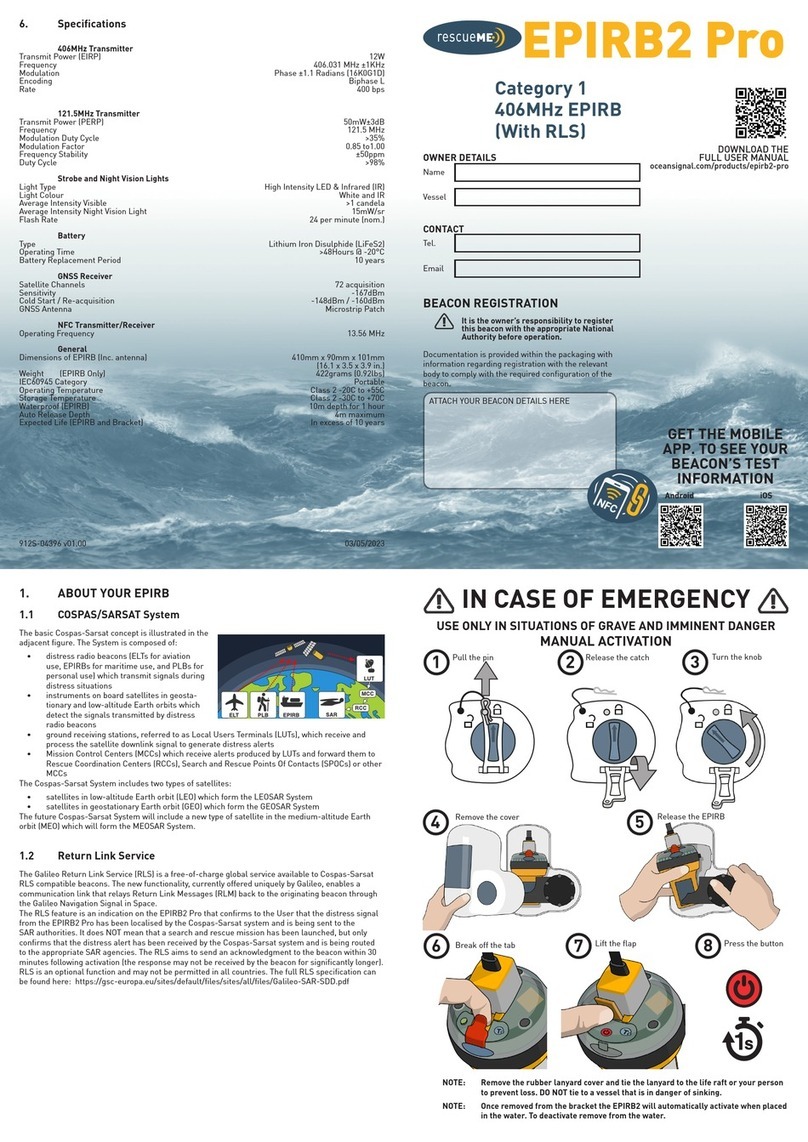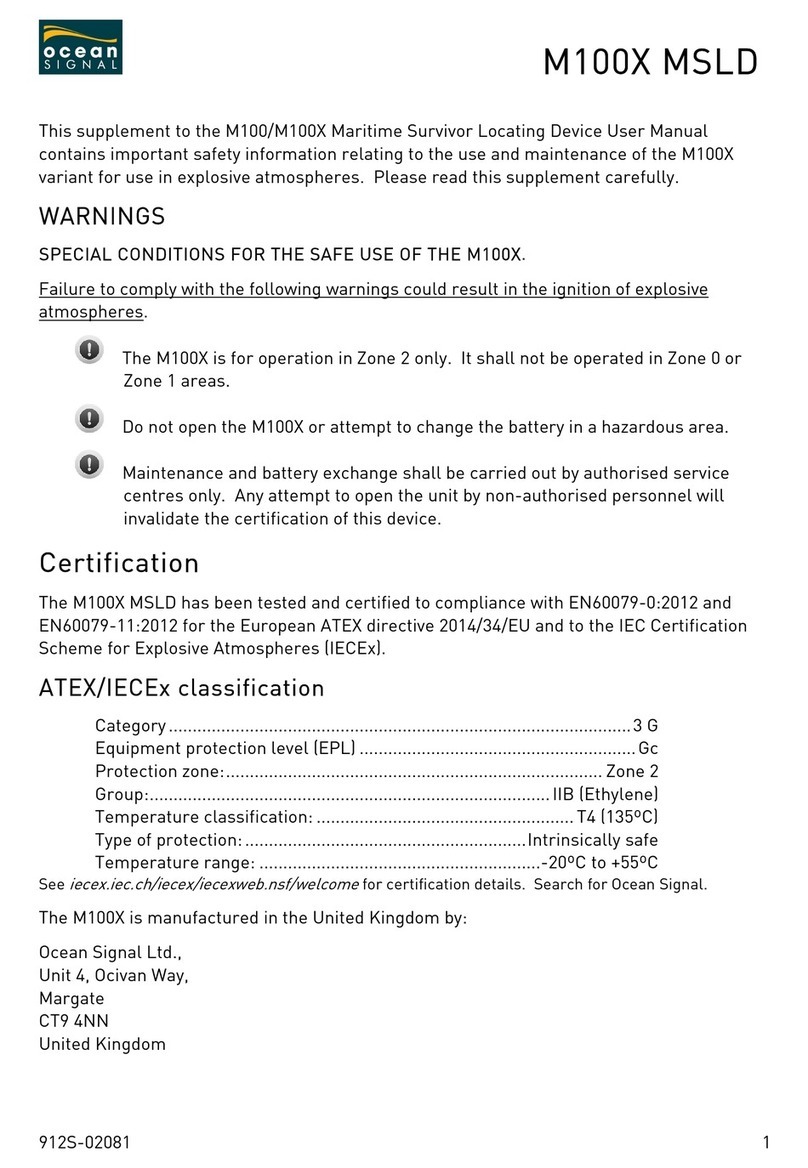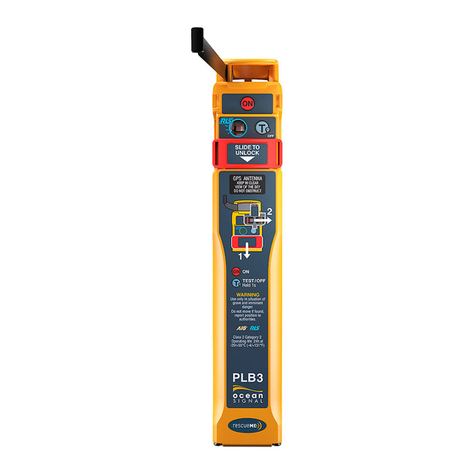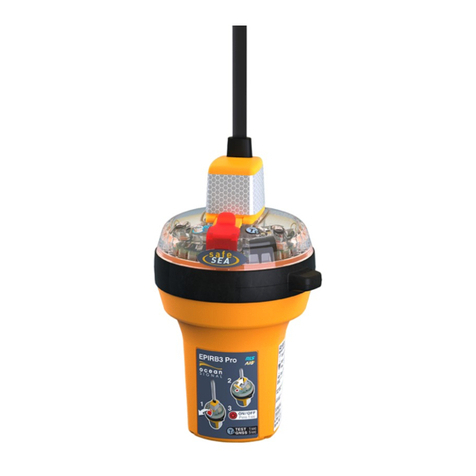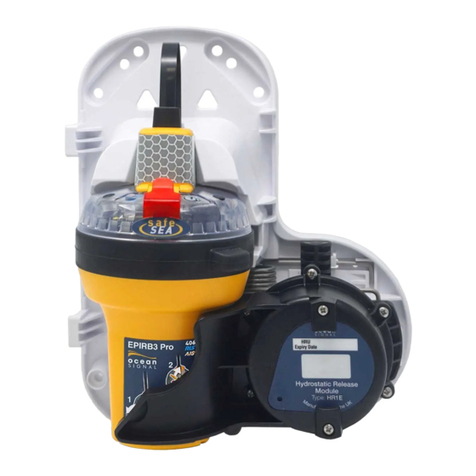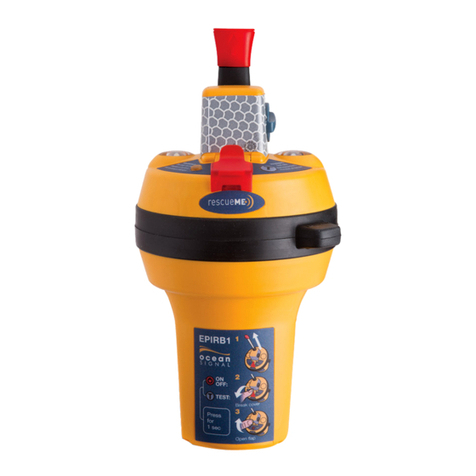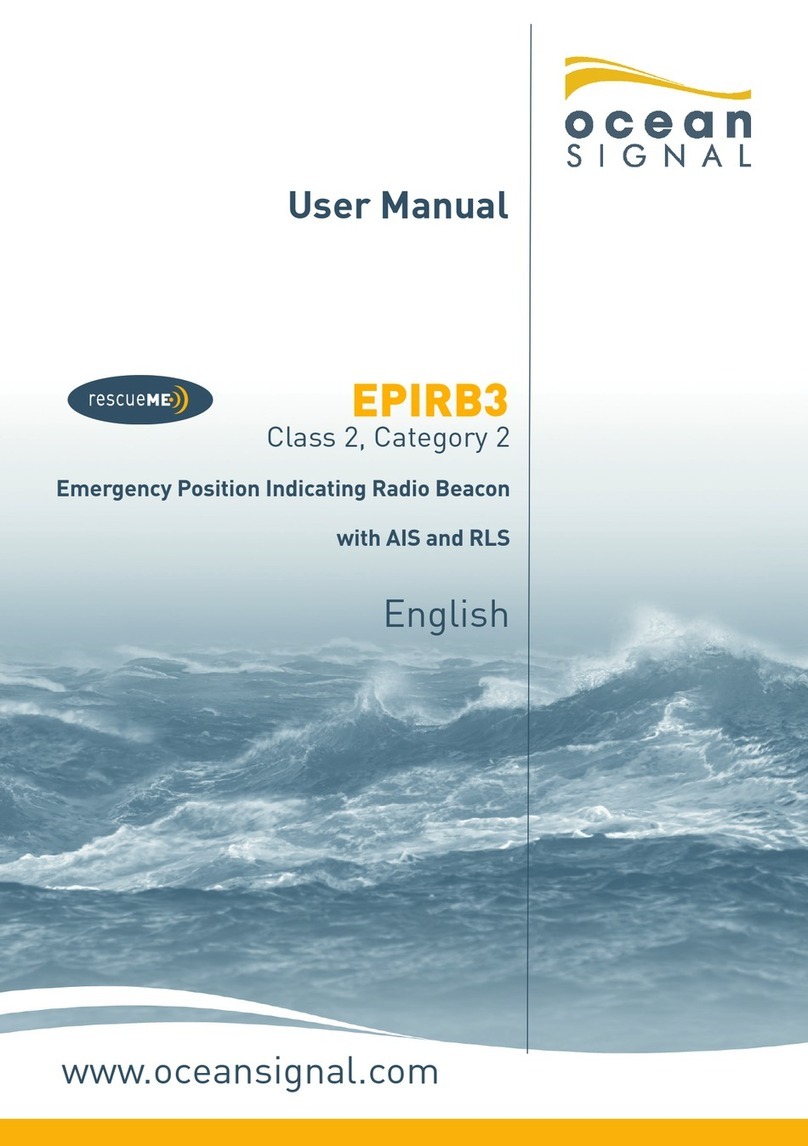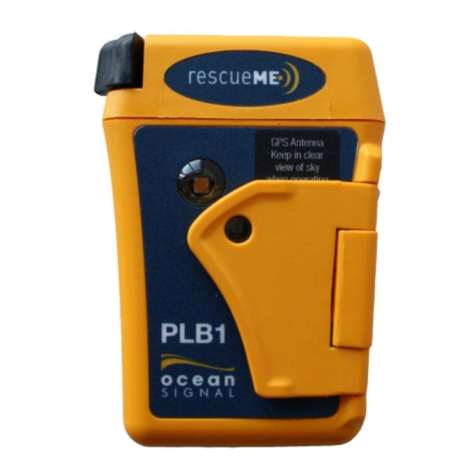
22/05/2023 912S-04393 - 01.00 7
EPIRB2 Pro USER MANUAL
2. GENERAL
2.1 Introduction
This manual provides valuable information for the installation, operation and routine
maintenance of the EPIRB2 Pro complete with the included Auto Release Housing.
Please read this manual completely before using your EPIRB2 Pro.
2.2 Exposure to RF Electromagnetic Energy
This product complies with EN62479 (EU) at separation distances of 25 mm and with
RSS-102 (Canada).
2.3 Warnings
!It is a legal requirement to register your EPIRB2 Pro with your National Authority.
!Only use your EPIRB2 Pro in a situation of grave and imminent danger.
!Deliberately misusing your EPIRB2 Pro or setting it off accidentally may result in
prosecution and a fine.
!Contains Lithium batteries:
- store between -30°C (-22ºF) to+70°C (+158ºF)
If the EPIRB2 Pro is stored at higher temperatures the battery life may
be degraded and should be replaced earlier than the date stated. Failure
to do this may result in the EPIRB2 not fulfilling the stated 48hr
operating
life. The effect is more pronounced as the temperature increases.
- DO NOT ATTEMPT TO REPLACE THE BATTERIES YOURSELF
unauthorised opening and battery replacement may put
your life at risk.
- do not short circuit, incinerate or recharge.
!Please see section 9.4 for information on safe transportation.
!The battery in your EPIRB2 Pro should be replaced immediately if it has been
activated, or if the test indicator shows the battery as ‘used’, or if the expiry date
marked on the unit has been exceeded.
!Battery replacement must be carried out at an Ocean Signal authorised battery
replacement centre using manufacturer supplied battery components. The
EPIRB2 Pro is supplied with an automatic release housing for external installation
only. See the installation guidelines in section 4 for further information.
!Please read these instructions carefully. Failure to follow the guidance in this
manual may result in loss of warranty.
